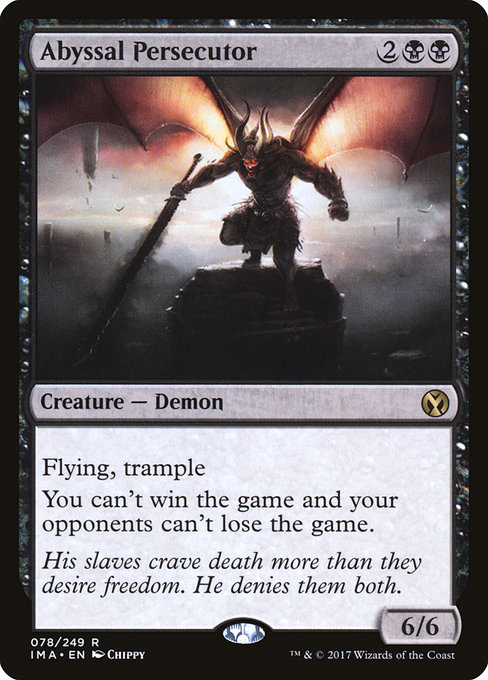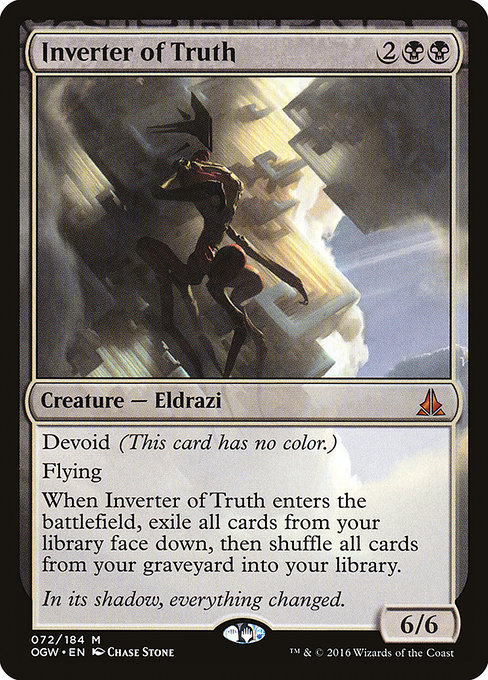One of Magic’s strengths is that the more enfranchised section of its player base understands how to design a Magic card–not how to balance it, necessarily, but players can recall trends and can make predictions for mana value and casting cost based off of past cards. This is why Watchwolf was so thrilling in a world of Trained Armodon and why Kalonian Tusker was exciting in a world of Watchwolf. We know that a Mortivore costs 2BB, and so it’s exciting when we see a Cruel Somnophage, much as we scanned Questing Beast for a drawback somewhere in that novella back in 2019, used as we were to (at the time, quite good) Obstinate Baloth.

Magic engenders expectations and then hypes us up by breaking those expectations in creative ways, and iterations of past cards is the most dependable set of expectations. The sweet spot for midrange players is four mana–cheap enough to expect to hit in the average game, but hefty enough to be capable of winning that game. We’ve seen exciting cards printed at that casting cost, from tournament staples like Ravenous Baloth to casual icons like Juzam Djinn. We’ve also, as players, seen riffs off of those classics, watching Juzam evolve to Plague Sliver and to Ravenous Giant and even to Juzam-sized threats without even the whisper of a drawback.
I was playing Commander in a bar this weekend with a friend–my Savra, Golgari Queen deck versus my friend’s Ilharg, the Raze-Boar deck–which was an excuse for every thirtysomething to come up to our table and enthuse about their unbeatable Elf deck they had back in 2002. One Patrón-fueled patron picked the Ilharg off the bar and read it intently. “Where’s the drawback?” he asked. “Why is he a 6/6 for five?” I didn’t have an answer for that, as someone who’s been playing Black for over twenty-five years, since the days of Vebulid and Eviscerator and Devouring Strossus. Sometimes you get a Questing Beast and sometimes you get a Juzam Djinn.

2002’s Onslaught attempted to outclass Juzam by introducing the 6/6 for 2BB with Grinning Demon. For those who weren’t playing back in the Precambrian, I cannot express to you how hyped Grinning Demon was–this was an era where Juzam Djinn was one of the most iconic cards ever printed, and Wizards appeared to be printing an oversized Juzam Djinn into Standard. Like Ernham Djinn before it, though, this Juzam revisit fell flat. Two life is a big ask, and without any evasion, Grinning Demon was more of a vampiric Abyss than a Djinn. The Standard format was Goblins, Psychatog, Astral Slide control, and eventually Affinity, and Grinning Demon kept smiling all the way to the bulk bin.
We didn’t learn our lesson. When Worldwake previews debuted Abyssal Persecutor, the hype was similarly intense for the anti-Platinum Angel. On January 26th, 2010, Star City Games was charging $29.99 per copy, the same preorder price they were charging for a Jace, the Mind Sculptor.* The drawback was seen as temporary–attack with the Persecutor until your opponent is at negative life, then bounce or sacrifice the Demon somehow to win on the spot. It’s a fun plan, but when your opponent is Brainstorming every turn or stapling a Sword of Feast and Famine to various Hawks, this strategy doesn’t quite compete. Abyssal Persecutor still holds a minor premium, though, for the tantalizing puzzle it presents, and it saw a reprint in Iconic Masters as the exemplar of the Demon creature type.

Luckily, as Worldwake faded out of Standard and took with it Abyssal Persecutor, a new 6/6 four-drop was waiting to live up to its potential: Return to Ravnica’s Desecration Demon. Initially seen as a “punisher” card (c.f. Skullscorch or Dash Hopes) that gives your opponent too much agency over how well your card performs, Desecration Demon saw serious play in the Ravnica/Theros Standard Mono-Black Devotion deck. Generally, punisher cards are execrable, but Desecration Demon only gave your opponent the illusion of choice: it was likely that they wouldn’t have the creatures to sacrifice or, if they did, the double black in the Demon’s casting cost helped charge up your Gray Merchant of Asphodel. Like Grinning Demon, this was more often of The Abyss than a cheap damage-dealer, but when that’s one-sided and pain-free, it’s significantly better.
Battle for Zendikar launched a contender that eventually outshone Desecration Demon: Inverter of Truth. Once a Pioneer boogeyman in conjunction with Thassa’s Oracle, it took years for the Inverter to see play–Inverter is a high-risk card to play outside of that combo in a format rife with cheap, Instant-speed graveyard removal. Still, it’s a far cry from Morality Shift and a fun minigame outside of the combo: can you win in the air before you deck yourself? That’s not a gamble worth trying outside of the kitchen table, but it’s a beautifully-designed card that plays well, albeit unpredictably.

The less said about Grim Strider, the better–a hollow hybrid of Nyxathid and Grinning Demon, this was often a 3/3 for four, a pallid and flaccid imitator of an exciting mana cost to stat point. Suitably, it’s consigned to the dustbin that is Amonkhet.
Core Set 2019 gave us Demon of Catastrophe, which is basically a one-time sacrifice Lord of the Pit. Not a bad card in the abstract, it disappointed in play–in post-Modern Magic, sacrificing multiple cards for no immediate benefit doesn’t clear the bar. It did have nice tension in Limited–when you tapped that 2BB and sacrificed your Hired Blade, someone was winning the game shortly thereafter, whether it was the Demon’s master or the opponent with a well-timed Bone to Ash.
Phyrexia: All Will Be One gave us two 6/6’s for 2BB in Ravenous Necrotitan and Archfiend of the Dross. Ravenous Necrotitan is closer to Demon of Catastrophe, and was consigned to Limited. Archfiend of the Dross feels like more of a Abyssal Persecutor, with an actual drawback that you can mitigate by overpowering your opponent (or by hitting their creature with a Metamorphic Alteration). Archfiend is one of my favorite creatures in years–it truly feels like pre-Modern Demons, playing Magic with a sword of Damocles perilously hanging over you.

This brings us to Devouring Sugarmaw. Sugarmaw riffs off of Desecration Demon and Throne of Eldraine’s Clackbridge Troll, but has a unique advantage: the Adventure side can feed the card for multiple turns. Raise the Alarm isn’t great, as evidenced by Mishra’s Onslaught, and Have for Dinner wouldn’t even be in consideration, but Throne of Eldraine taught us not to discount any Adventure card. Part Kicker, part Flashback, a cheap Adventure ekes out enough value to capture attention. You would almost never play Have for Dinner on its own, but as half of a split card, you’re happy to have the option–particularly when it powers up your Sugarmaw.
Sugarmaw won’t let you sac nontoken creatures to feed the Horror, but we luckily have Decayed tokens galore in Standard right now, and Skrelv’s Hive synergizes well with the diabolic bundt cake. We even have Desecration Demon 2.0 in Reservoir Kraken, although I doubt we’ll get that desperate. Ashiok, Wicked Manipulator feeds the Sugarmaw, as do Kaito, Dancing Shadow and, most interestingly, Archangel Elspeth. Mondrak, Glory Dominus is especially interesting with Devouring Sugarmaw, as it allows you to double up on Food tokens–but if you’re landing a Mondrak, you probably are already in that game. Still, the drawback on Devouring Sugarmaw is minimal enough–and supported by the card’s Adventure half–that it seems much closer to Desecration Demon than Inverter of Truth.
As I enter my third decade playing Magic mostly uninterrupted, my main struggle isn’t with Universes Beyond or typeface minimization right as my aging eyes move from “deteriorating” to “decrepit,” but with what my playgroup–also oldtimers–has called “stats hangover.” Each preview season, the groupchats laments/exults over the latest 4/4 for four and chuckles at the lack of a drawback on the latest Toxrill, the Corrosive. I suppose that some part of me will always consider Watchwolf “above baseline,” no matter how many sharp reminders I get that, no, a vanilla 3/3 is not a tournament powerhouse anymore. So I’m wary of expecting too much from Devouring Sugarmaw–after all, even the iconic 6/6’s for 2BB of Desecration Demon and Inverter of Truth were very much “right place at the exact right time” candidates. Still, I have high hopes for the malignant pastry, even if it winds up closer to the Demon of Catastrophes side of the continuum; if nothing else, it’s Magic’s first canonical depiction of gummi worms, and I’ll always cherish it for that.
*data pulled via the Internet Archive’s Wayback Machine tool
Rob Bockman (he/him) is a native of South Carolina who has been playing Magic: the Gathering since Tempest block. A writer of fiction and stage plays, he loves the emergent comedy of Magic and the drama of high-level play. He’s been a Golgari player since before that had a name and is never happier than when he’s able to say “Overgrown Tomb into Thoughtseize,” no matter the format.

